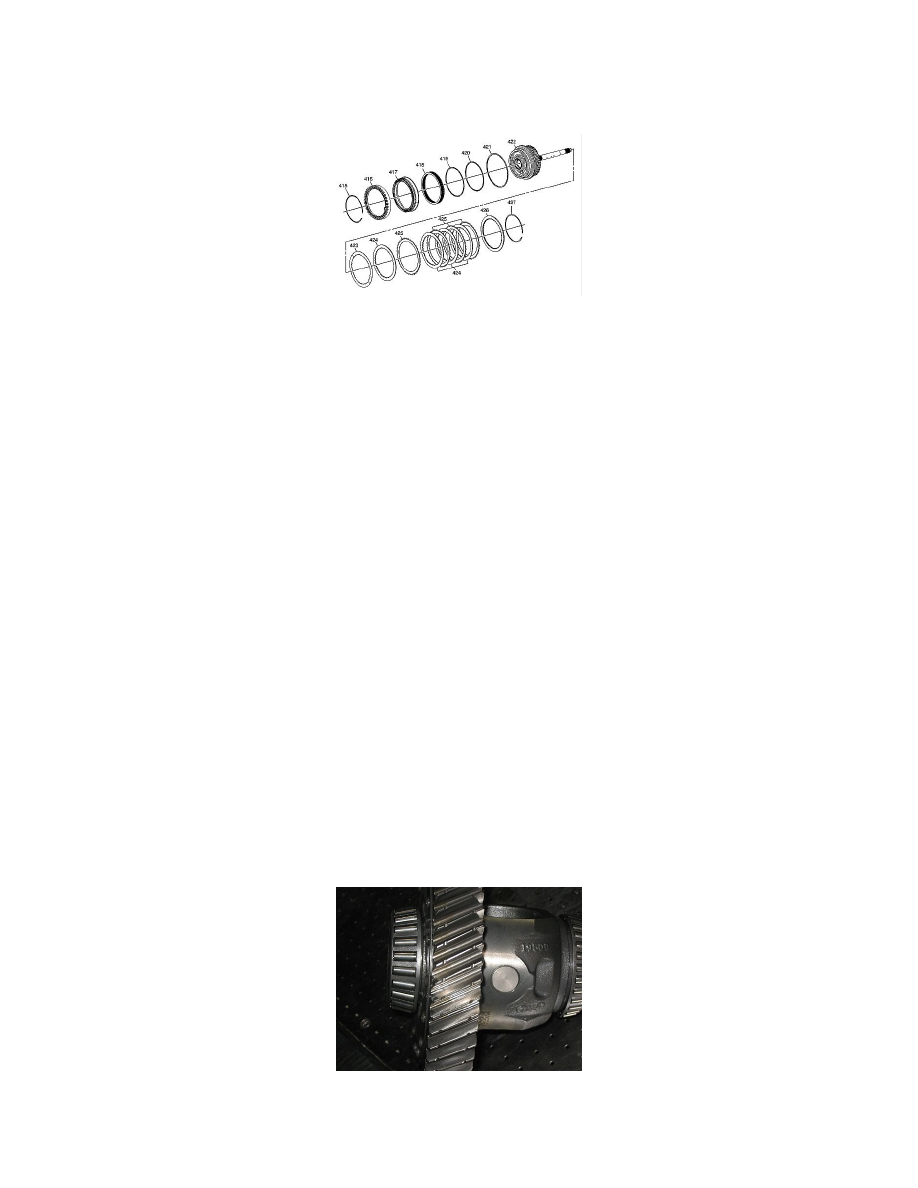Enclave FWD V6-3.6L (2008)

Important
Debris generated by the condition must be cleaned from the entire transmission and the pump fluid filter (201) and the control solenoid filter
plate (16) must be replaced. Failure to separate the case halves, disassemble the transmission, clean the debris and replace the pump fluid filter
(201) and the control solenoid filter plate (16) could lead to repeat transmission damage and repairs.
A new 3-5 reverse clutch plate (WAVED), P/N 24254103 (423), has been released to address this condition. Refer to SI for the appropriate repair
instructions.
A broken 35R wave plate can generate varying amounts of debris inside the transmission. In most cases this debris has not passed through the pump fluid
filter (201) so has not caused damage to the pump, valve bodies or torque converter. This debris can be cleaned and the transmission successfully
repaired.
In summary the following steps should be taken:
1. After removing the transmission from the vehicle, remove the case cover assembly (35). Inspect the case cover for damage. This part is serviced
and can be replaced if it is damaged.
2. Remove the 35R / 456 clutch housing assembly (422) and inspect it for a broken 35R wave plate (423).
3. Inspect the case (21) for damage. If the case is damaged, the transmission must be replaced as the case is not serviced. If the case is not damaged,
proceed with the tear down and inspection. Any possible damage is typically confined to the case lugs. If the clutch plates can move freely to
engage or release the clutch packs, the transmission should not be replaced. If the snap ring grooves are not damaged and will securely retain the
snap rings, the transmission should not be replaced. Peening or wear of the edge of the case lugs that engage the clutch plates is normal and
acceptable and not cause for transmission replacement.
4. Remove the control valve body cover (1), control solenoid (w/body and TCM) valve assembly (15) and filter plate assembly (16).
5. Inspect the filter plate assembly (16) for the presence of metallic debris on the screens.
-
If there is no debris on the screens, the pump fluid filter was effective and there is no debris in the pump or torque converter. Therefore the
pump, torque converter and valve body do not need to be replaced. The transmission should be repaired.
-
If there is debris on the screens, the pump and torque converter should be inspected further. Refer to SI procedure Transmission Fluid Pump
Cleaning and Inspection for the pump. Refer to SI procedure Torque converter Diagnosis for the section Torque Converter Replacement
Guide.
-
Fine metal particles that you cannot feel (traces of metal flakes/gray color to the fluid) are not reasons to replace the torque converter.
-
Metal chips/debris that you can feel or that are found in the converter, or when flushing the cooler and cooler lines, indicate the torque
converter should be replaced.
6. The valve body must be disassembled and cleaned, refer to the latest version of Corporate Bulletin Number 08-07-30-005 for direction.
7. The transmission case halves must be separated, internal components removed and all parts thoroughly cleaned. Be sure to clean the speed sensors,
both input (ISS) and output (OSS). These sensors are magnetic and will attach and hold any ferrous material. Failure to clean these sensors may
result in DTCs. A new pump fluid filter must be installed.
Notice
The front differential carrier assembly (31) teeth are marked with notches to identify gear ratio (see picture above). Do not confuse these marks with
